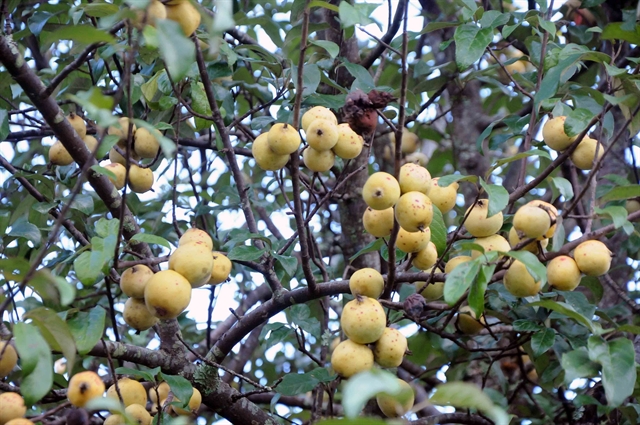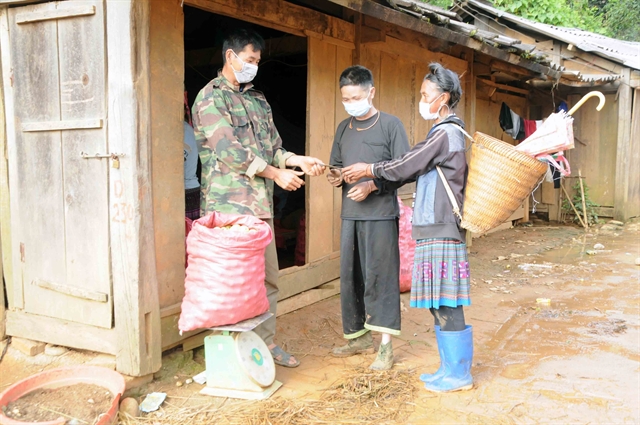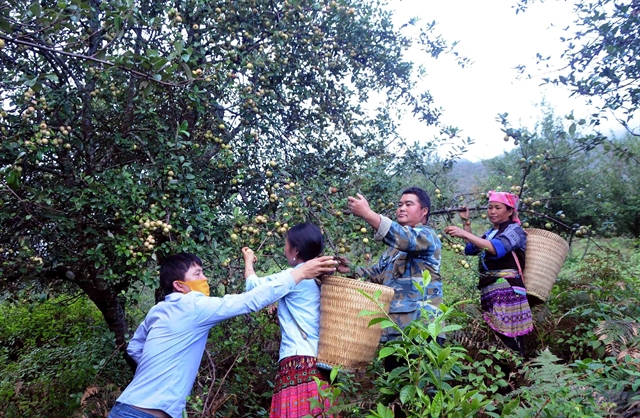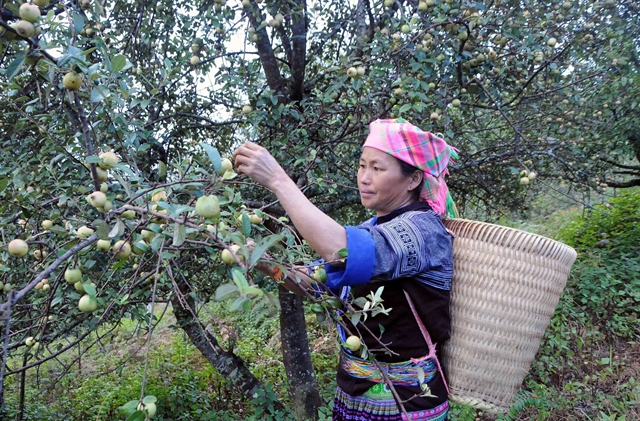 Life & Style
Life & Style

The arrival of autumn means the beginning of the harvest season of táo mèo (docynia indica) in Nậm Nghiệp Village in the northern province of Sơn La. In recent years, the fruits have brought high economic efficiency to the region and improved local lives in recent years.

|
| The harvest season of táo mèo in Nậm Nghiệp Village lasts from September to the end of October. — VNA/VNS Photo Quang Quyết |
The arrival of autumn means the beginning of the harvest season of táo mèo (docynia indica) in Nậm Nghiệp Village in the northern province of Sơn La.
Located at an altitude of over 2,000m above sea level, the village is covered in fog all year round, a favourable natural condition for growing the fruit.
.jpg)
|
| Nậm Nghiệp Village has a favourable natural condition for growing táo mèo. — VNA/VNS Photo Quang Quyết |
According to local Kháng Thị Mai, táo mèo was planted in the village a long time ago. Thanks to suitable climate and soil, the fruits grown there have yellow and light red colour with typical juicy sweet and sour taste.

|
| Táo mèo are sold to many traders from nearby provinces like Lào Cai or Yên Bái. — VNA/VNS Photo Quang Quyết |
Táo mèo has been known as a herbal remedy for digestive problems, heart failure, and high blood pressure for centuries. It’s also a key part of traditional Chinese medicine. Therefore, the fruits have been sold to many traders from nearby provinces like Lào Cai or Yên Bái, bringing high economic efficiency to the region and improving local lives in recent years.

|
| The fruits have helped to improve the living standards of local ethnic minorities in recent years. — VNA/VNS Photo Quang Quyết |
With local authorities’ attention in recent years, the growing area of táo mèo in Nậm Nghiệp Village has been extended from initial 20 hectares to over 300 hectares. Each kilo of the fruit could be sold from VNĐ10,000-15,000 (US$0.4-0.7). — VNS

|
| Táo mèo is known as a herbal remedy. — VNA/VNS Photo Quang Quyết |




